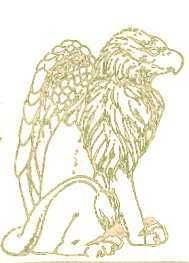Search for ferns by common name, latin name, USDA Zone, or by keywords like whether the fern is Evergreen, Sub-Evergreen, Semi-Evergreen, Deciduous, or Wintergreen or just browse our current fern selections.
Variegted Holly Fern (Arachniodes simplicior)
Variegted Holly Fern (Arachniodes simplicior)
Synonyms / Also Sold as: Arachniodes simplicior ‘Vareigata’
While tropical ferns have yielded a substantial number of desirable variegated forms, variegation is very rare in temperate species. Viral streaking that can resemble variegation may occur in Asplenium scolopendrium and its cultivars as well as some Cyrtomium species but it is usually unattractive and disfiguring. The consistent variegation, broadly triangular fronds and prickly, leathery texture and high gloss sheen of this fern make it a standout in the temperate garden. Though it is a close relative to many ferns in the genus Polystichum, this fern is noticeably more cranky and slow-growing, and besides that, it is a vertiable delicacy to slugs and snails; however, its striking appearance makes it well worth the trouble to keep it happy! This fern seems to love warm summers and will be most likely to thrive where the thermometer hits swooning levels that immolate mild coastal types. When planting this fern in areas with cool summers, look for a sheltered site that will capture the summer's warmth without being exposed to the mid-day sun. Patience is required in the spring since this fern is very slow to emerge from its winter's rest and may not make an appearance until June. This fern excels as a snowbird-type portable resident summering outside when all is beginning and retreating inside when things are downright hostile. The glistening leathery foliage is the iridescent green of a glacially-fed river, highlighted by a central band of fleshy tree-frog yellow-green. The bipinnate (twice divided) blade is broadly oval due to the exaggerated size of the basal pinnae (lowest set of leaflets) which themselves echo the overall blade shape. The basal pinnae are further enhanced by the elongated bottom pinnules next to the rachis (the set of subleaflets closest to the stalk). The noticeably toothed and spine-tipped pinnule margins are the finishing touch of elegance. The fronds arise from a short creeping rhizome and fan out in a horizontally arching arrangement. The genus name is from the Greek, "arachniodes", meaning like a spider's web, and refers to the softness of the indusia (spore casings) and not to any overall spider-like countenance or attraction for such eight-legged weavers.
Frond Condition: Evergreen
Mature Height: 12”
Origin: Japan and China
Requirements: Some Shade, Partly Shaded, Lightly Moist to Evenly Moist; prefers warm shade and performs better with good drainage or reduced winter moisture; protect from slugs
USDA Zones: 8, 9, 10









